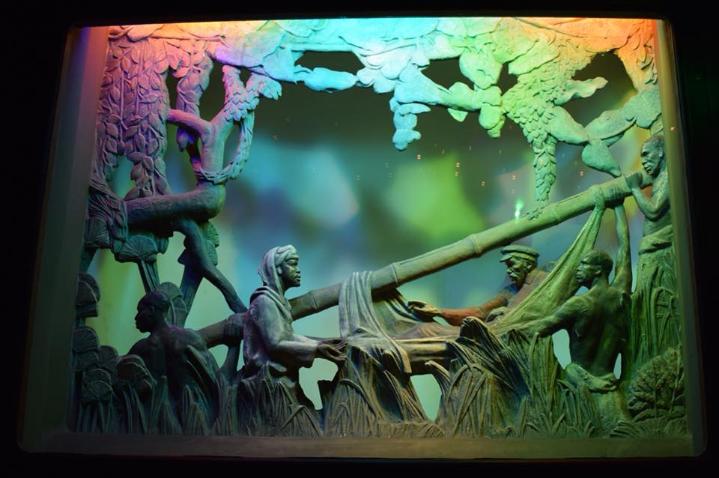Pilkington Jackson Tableux
Charles d’Orville Pilkington Jackson, was a prominent 20th Century British sculptor, who is best known for his Scotland’s most creation of some of Scotland’s most iconic landmarks, including The Scottish National War Memorial in Edinburgh Castle and statue of Robert the Bruce at Bannockburn.
Born on the 11 th October 1887 in Cornwall, Pilkington Jackson would go on to study design and sculpture at the newly established Edinburgh College of Art in 1907 at the age of 20 and after graduating, he would then travel to Rome, to work closely with the prominent Italian archaeologist Giacomo Boni on the rebuilding of the Arch of Titus, a magnificent example of Roman architecture, constructed almost 2000 years ago, on the order of the emperor Domitian.
Following his travels in Italy, he would then go on to serve in both World Wars, despite being far beyond the age of conscription, he was 52 at the time, when the time of the second conflict came around. In between these conflicts, Pilkington Jackson put his architectural and design talents to good use, designing war memorials for many towns and cities across Scotland. It was also during this time that he was also commissioned to create numerous memorials to famous Scots, including his famous tableaux at the David Livingstone Centre, which depicted David Livingstone’s experiences in Africa.
Some of Charles Charles d’Orville Pilkington Jackson’s other works include:
- Eton College war memorial (1922)
- Earl Haig Memorial (bust), Scottish National War Memorial, Edinburgh Castle (1928)
- Sculpture on the Scottish National War Memorial (1919-1927) at Edinburgh Castle in conjunction with Sir Robert Lorimer.
- Series of 82 military statuettes for the United Services Museum in Edinburgh Castle (1929–33)
- The statue of Robert the Bruce mounted on a war-horse at Bannockburn in the centre of the battlefield (1964)
Collaborating with architect Sir Frank Mears, who was engaged to prepare a scheme to save David Livingstone birthplace at Shuttle Row, Jackson was commissioned to create eight polychromatic plaster tableaux to depict David Livingstone’s journey to Africa. Each tableaux represents a characteristic of Livingstone, as well as an actual incident in his life. He also went on to work on The World Fountain in the garden of the memorial and later a carved wooden sculpture entitled ‘The Last Journey.’
The tableau were each individually sponsored by groups and societies, who supported the vision of a dedicated memorial site, responding to appeals for financial support, including The London Missionary Society for whom Livingstone was a Christian missionary (Vision), The National Bible Society of Scotland (Truth), The Congregational Churches of Scotland (Faith), The Geographical Societies (Courage), The Anti-Slavery Society (Mercy), The Daily Telegraph (Renunciation), The Baptist Union of Scotland (Endurance) and the Friends of the (Old) United Free Church (Sacrifice).
The tableau were built into the original bed recesses of the mill workers and formed a ‘Dark Gallery,’ whereby you could view each tableau, lit up for dramatic effect. The effect of the lighting arrangements, with just a little colouring, made the Livingstone Dark Gallery a firm favourite with visitors and locals alike.
The restoration of the Pilkington Jackson tableaux was realised by Graciela Ainsworth Sculpture Conservation, an award-winning company in the field of conservation and restoration of public and privately-owned sculpture and statuary, museum artefacts, carved stonework and historic building fabric. The company, with over 25 years’ experience and accredited by ICON, has an expert team of 9 trained conservators, artists and sculptors available for projects throughout the UK all of whom pride themselves in completing high quality conservation and restoration work within budget.
These tableau are of great importance to the David Livingstone Trust, and time and effort is being taken to re-imagine their modern interpretation and appreciation of the artistry of construction.






